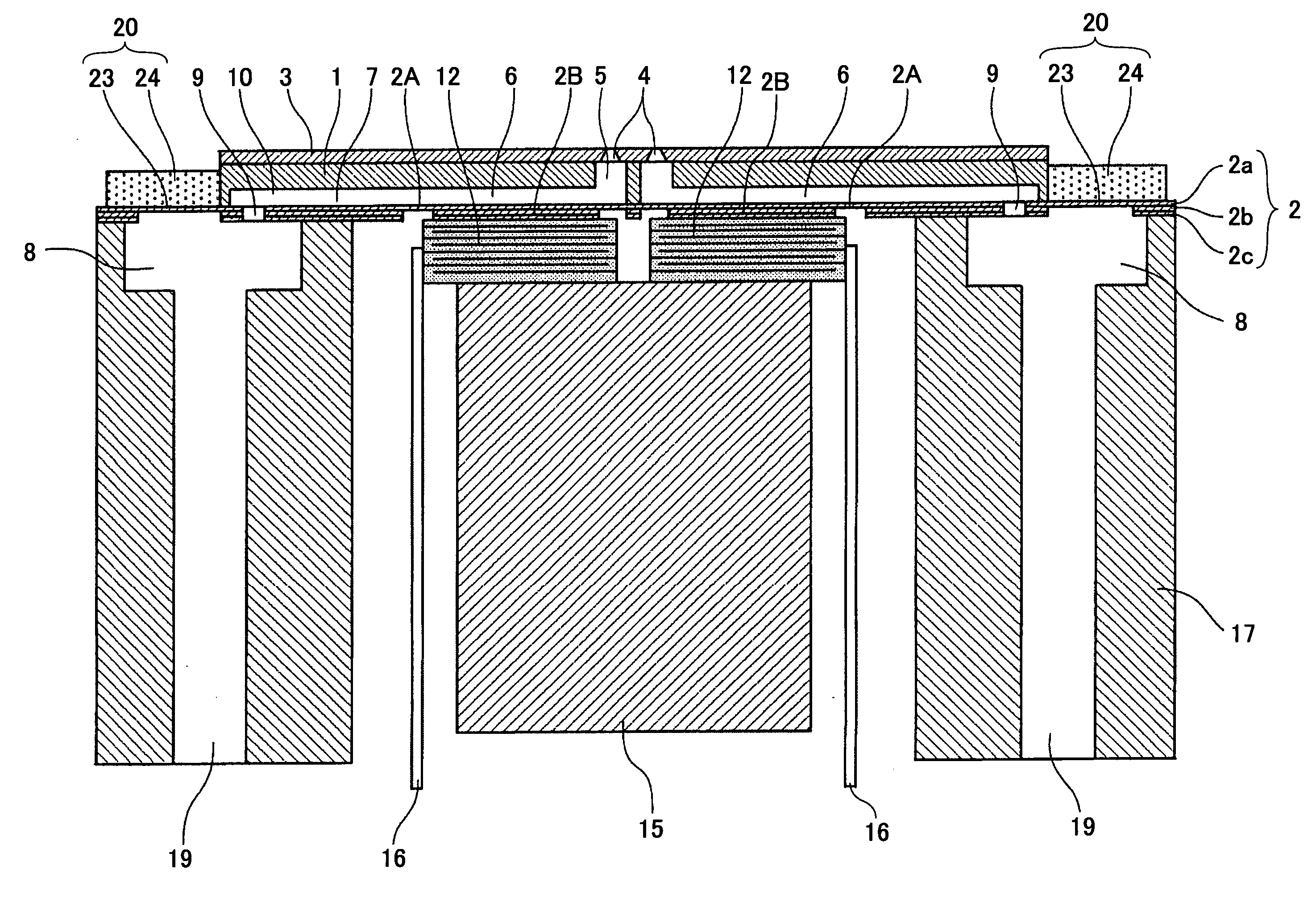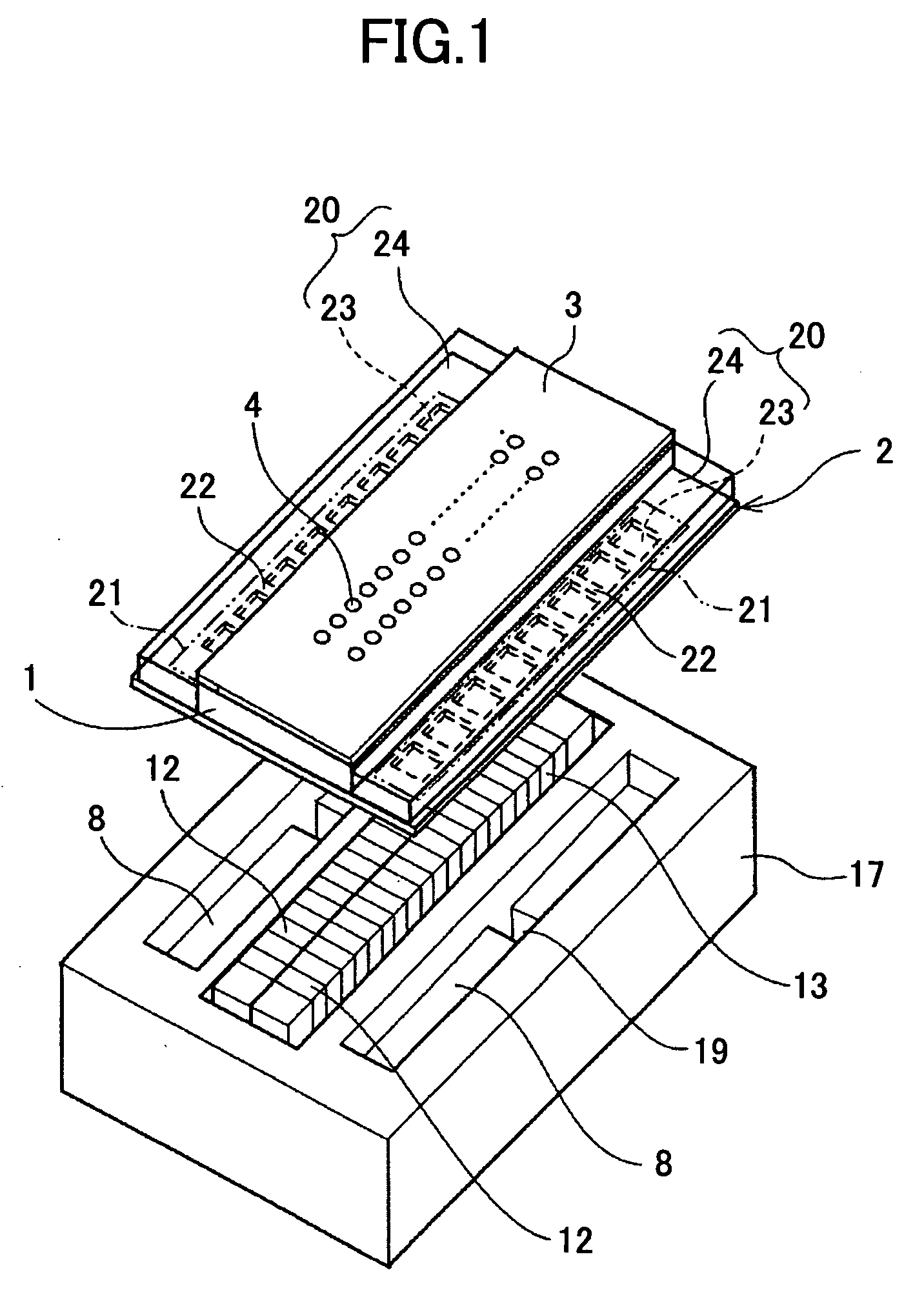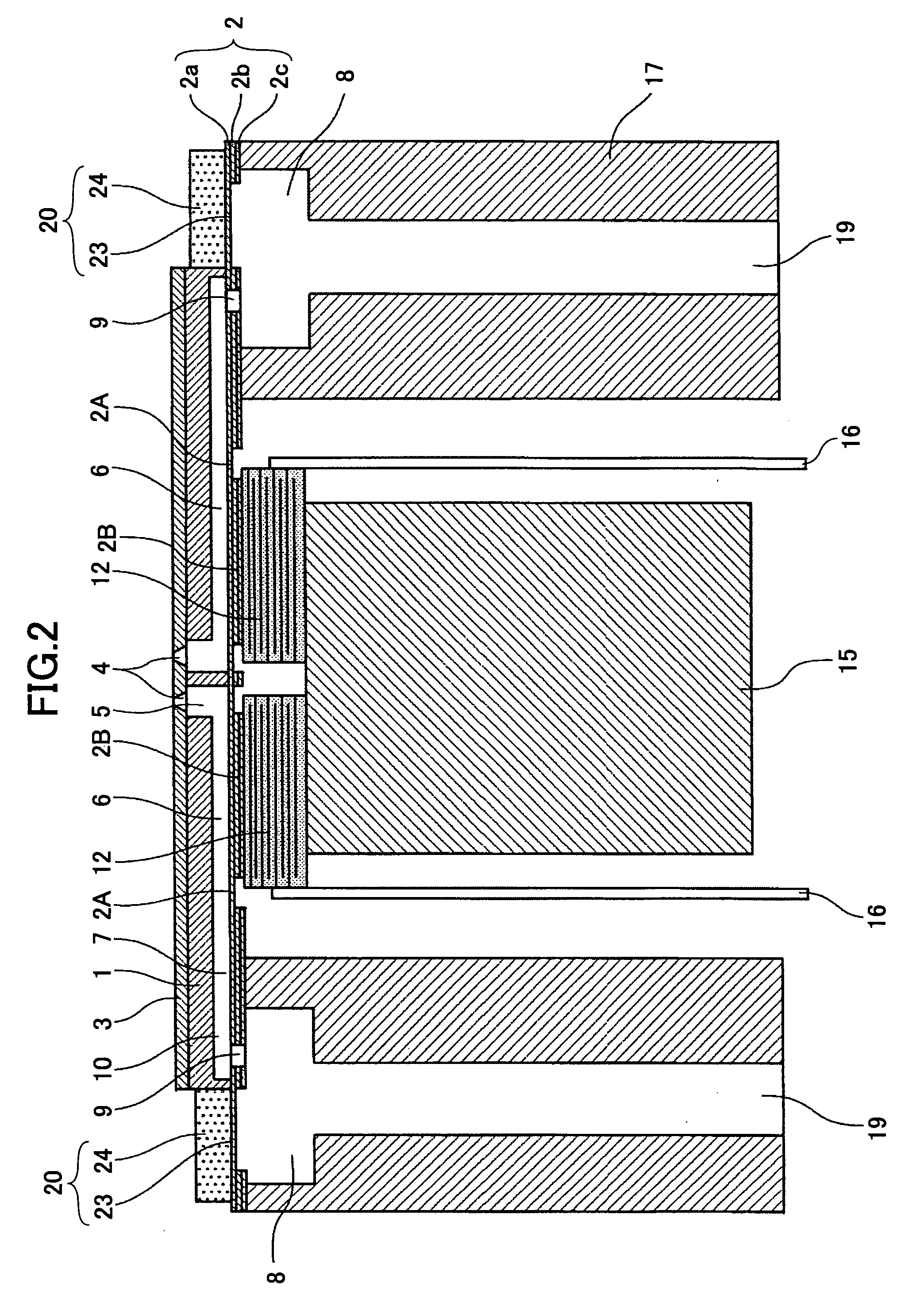Image forming apparatus
a technology of forming apparatus and nozzle, which is applied in the direction of printing, etc., can solve the problems of unintended nozzle leakage, failure of ejection, failure of discharge, etc., and achieve the effects of reducing layout restrictions, ensuring the capacity of common channels, and controlling mutual interference with efficiency
- Summary
- Abstract
- Description
- Claims
- Application Information
AI Technical Summary
Benefits of technology
Problems solved by technology
Method used
Image
Examples
first embodiment
[0087]First, a description is given, with reference to FIGS. 1 through 3, of a liquid discharge head according to a first embodiment of the present invention. FIG. 1 is an exploded perspective view of the liquid discharge head. FIG. 2 is a cross-sectional view of the liquid discharge head taken along the length of a pressure liquid chamber of the liquid discharge head (the directions perpendicular to the directions in which nozzles are arranged). FIG. 3 is a longitudinal-sectional view of the liquid discharge head taken along the width of the pressure liquid chamber of the liquid discharge head (the directions in which the nozzles are arranged).
[0088]The liquid discharge head includes a channel plate (liquid chamber base plate) 1, a diaphragm member 2 joined to the lower surface of the channel plate 1, and a nozzle plate 3 joined to the upper surface of the channel plate 1, thereby forming pressure liquid chambers (also referred to as “pressure chambers” or “channels”) 6 serving as ...
second embodiment
[0121]Next, a description is given, with reference to FIG. 5, of a liquid discharge head according to a second embodiment of the present invention. FIG. 5 is a cross-sectional view of the liquid discharge head taken along the length of a pressure liquid chamber of the liquid discharge head. In FIG. 5, the same elements as those of the first embodiment are referred to by the same reference numerals.
[0122]This head includes a nozzle cover 31 that protects the periphery of the nozzle plate 3. The nozzle cover 31 also serves as a member to protect the damper parts 20.
[0123]The nozzle cover 31 can protect the damper parts 20 from contact with the outside or contamination, so that it is possible to prevent damage to the liquid discharge head and degradation of its characteristics. Here, examples of “contact with the outside” includes contact with other parts, an assembler, jigs, and human hands during a manufacturing process and contact with paper due to a paper jam in an image forming ap...
third embodiment
[0124]Next, a description is given, with reference to FIG. 6, of a liquid discharge head according to a third embodiment of the present invention. FIG. 6 is a cross-sectional view of the liquid discharge head taken along the length of a pressure liquid chamber of the liquid discharge head. In FIG. 6, the same elements as those of the first embodiment are referred to by the same reference numerals.
[0125]This head includes a protection layer 32 that covers the surface of the damper material 24. The protection layer 32 may be formed by depositing fluororesin (such as pitch fluoride) or by baking or setting with ultraviolet rays a solvent of a silicon-based resin, a fluorine-based resin, an epoxy resin, or polyimide after its application. It is preferable that the protection layer 32 be a solid with tack in terms of easiness of handling in manufacturing the head. Further, it is preferable that the protection layer 32 have resistance to liquid (resistance to ink).
[0126]By thus protecting...
PUM
 Login to View More
Login to View More Abstract
Description
Claims
Application Information
 Login to View More
Login to View More - R&D
- Intellectual Property
- Life Sciences
- Materials
- Tech Scout
- Unparalleled Data Quality
- Higher Quality Content
- 60% Fewer Hallucinations
Browse by: Latest US Patents, China's latest patents, Technical Efficacy Thesaurus, Application Domain, Technology Topic, Popular Technical Reports.
© 2025 PatSnap. All rights reserved.Legal|Privacy policy|Modern Slavery Act Transparency Statement|Sitemap|About US| Contact US: help@patsnap.com



